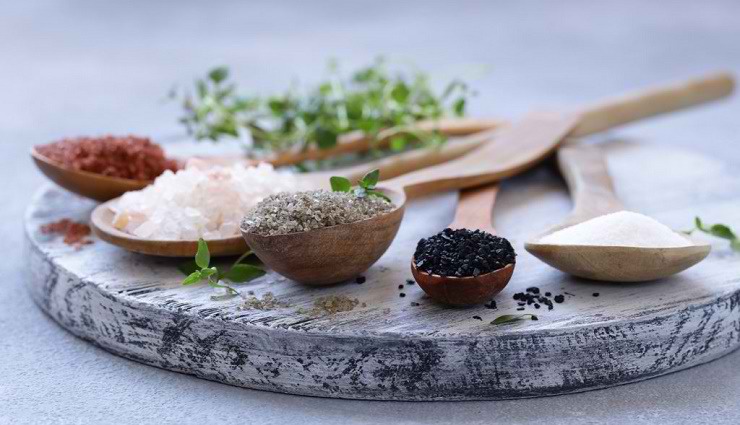The compound sodium chloride (NaCl) is salt and is usually available as refined grains or coarse crystalline flakes. Salt is one of the oldest flavoring and food preservatives. Today, our options have increased, and we can use different types of edible salt depending on our taste and needs. While this variety is excellent, it can get confusing at times. In this article, we will learn about some types of salt and their uses.
The benefits of salt
Sodium in salt is an essential element for life, especially for humans. Salt stimulates nerve impulses and maintains the balance of electrolytes and fluids. Sodium ions are vital for heart activity and some metabolic functions. However, consuming too much salt in the diet may lead to high blood pressure and cardiovascular diseases.
Epsom salt, first discovered in Epsom wells in England, relieves muscle pain and its use in bath water accelerates recovery. Of course, Epsom salt is not technically salt but a crystalline form of magnesium sulfate that looks like salt and is not edible.
Types of edible salt
1. Kosher salt
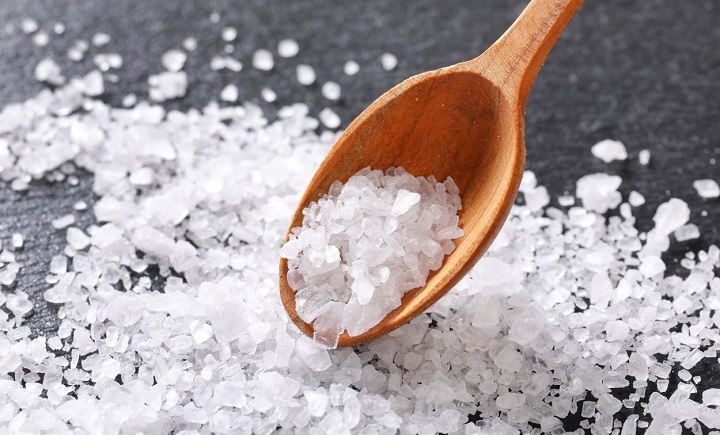
Kosher salt is a coarse-grained salt that is not refined; it is almost pure sodium chloride and is not ionized. This salt does not contain iodine or other additives. Kosher salt has coarser grains and less saltiness than table salt. Due to its coarse grains, kosher salt is suitable for flavoring meat, chicken, salads, and everything except cooking. This salt is obtained from rock salt deposits and is produced in many countries.
2. sea salt
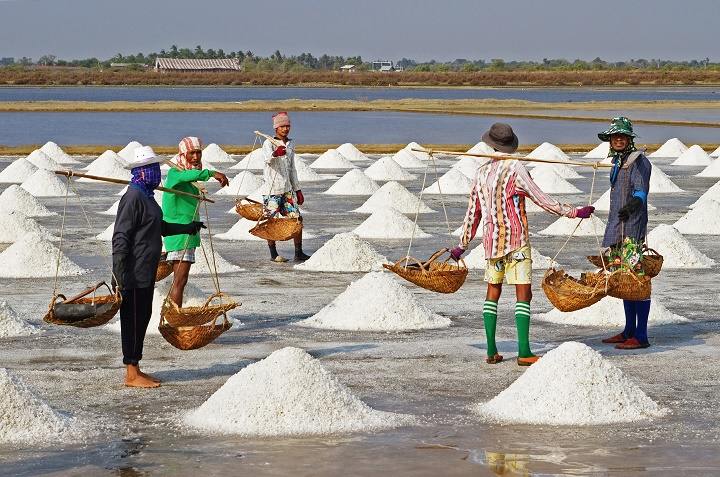
Sea salt is obtained by evaporating seawater and is coarser than ordinary table salt but much softer than kosher salt. This salt is less processed than table salt and retains its minerals. There may be up to 60 trace minerals in sea salt, considered healthy micronutrients. There are two types of sea salt: coarse and refined. The acceptable type is suitable for a salt shaker to flavor dishes on the table, and the rough type can be used for salting meat before cooking. Very coarse sea salt is also better to use as a supplementary salt after the food is prepared.
3. rock salt (rock salt or halite)
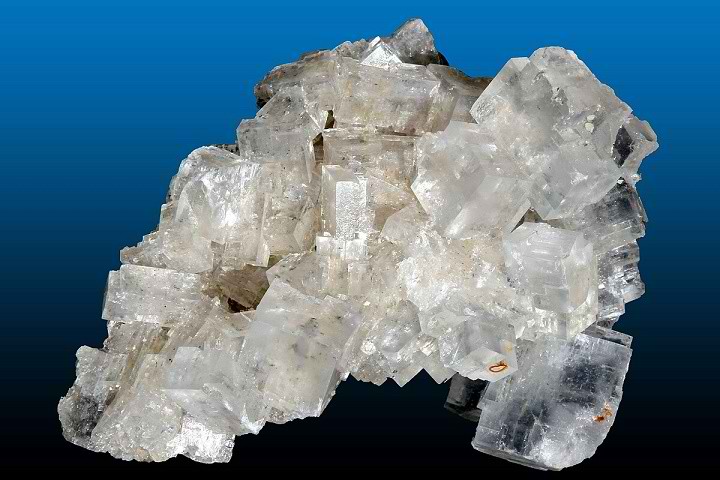
Edible rock salt is the natural form of salt.
4. Fleur de sel
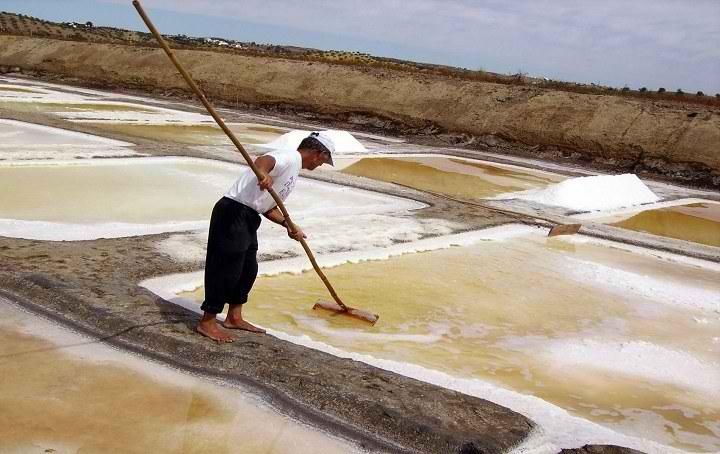 “Flor de sel,” meaning “flower of the sea,” is one of the most expensive salts in the world, as it is produced by hand in saltwater ponds. Salt mud is collected from the waters’ surface in the Brittany region of France with special wooden rakes and only in perfect weather conditions. Flower salt is a great choice, especially with nutty buttery caramels.
“Flor de sel,” meaning “flower of the sea,” is one of the most expensive salts in the world, as it is produced by hand in saltwater ponds. Salt mud is collected from the waters’ surface in the Brittany region of France with special wooden rakes and only in perfect weather conditions. Flower salt is a great choice, especially with nutty buttery caramels.
This salt is not used in cooking but as the final seasoning of food. Its large, flat pieces are often used as a finishing salt to add a mild salty flavor and crunchy texture to salads, grilled foods, and other foods where texture and visual appeal are essential.
5. table salt
Table salt is the most common type of salt in cooking. This salt is sold in all grocery stores, and most people think it is essential. Of course, table salt is not very natural because it is processed, and any trace minerals are removed during purification. It is enriched with anti-caking agents, so it does not clump in humid environments. Commonly, table salt is iodized to improve general health (table salt was iodized in the 1920s to help prevent widespread thyroid problems and goiter).
Table salt is an excellent choice for seasoning, baking, and grilling because its refined grains disperse evenly in flour and other dry ingredients and dissolve easily in liquids.
6. Flake salt
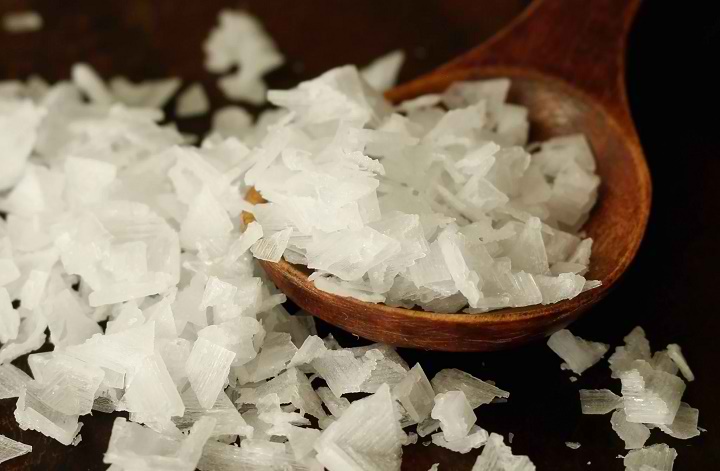
Flaky salt is a cooking salt that is a common seasoning for many dishes. Salt crystals are broken into smaller pieces to prepare flaky salt and then made into sheets.
It’s best to use the wonderful crunchy crystals of flaky salt as a finishing touch to grilled meats, roasted vegetables, and flavoring slices of sourdough bread dipped in olive oil.
7. Himalayan pink salt
Edible pink salt is harvested by hand from the Khewra salt mine deep in the Himalayan mountains in Pakistan. The pink color of Himalayan salt is due to iron oxide. This salt contains all 84 natural minerals found in the human body. Because of these rich minerals, it has a more intense or complex taste than ordinary table salt (it is saltier than table salt).
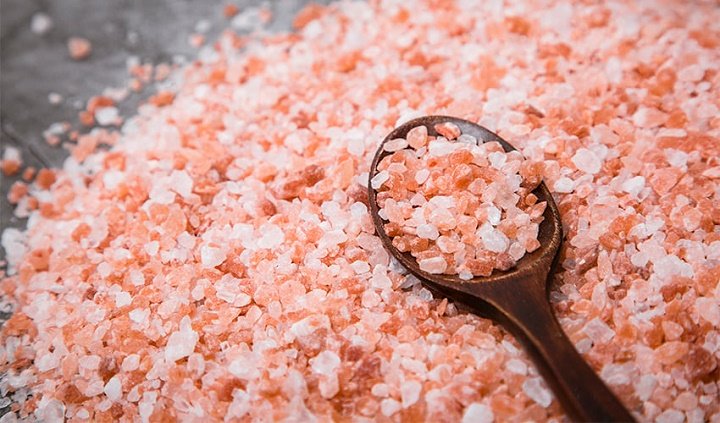
This salt is perfect for any recipe that requires a small amount of salt, such as sauces and marinades, or for garnishing food. Himalayan rock salt can retain heat for hours, making it a famous baking stone for delicate proteins such as fish.
8. Black salt
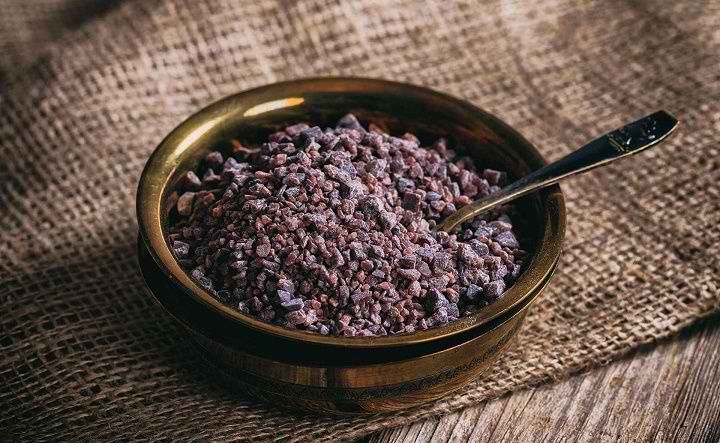
Black salt, also called Kala Namak salt, is another Himalayan salt. This salt contains iron, magnesium, calcium, and other trace elements.
Black salt has a very pungent smell and taste, so it is used in small amounts. This salt is used in Indian cooking when its exceptional sulfur taste is considered. The sulfurous taste of this salt is the presence of sodium sulfate in its composition. Black salt is one of the ingredients that gives the spicy and unique taste of chaat masala. This salt is an excellent flavoring agent and is best used in foods with a strong flavor and aroma, such as curries, spicy foods, pickles, and salads.
9. Hawaiian salt
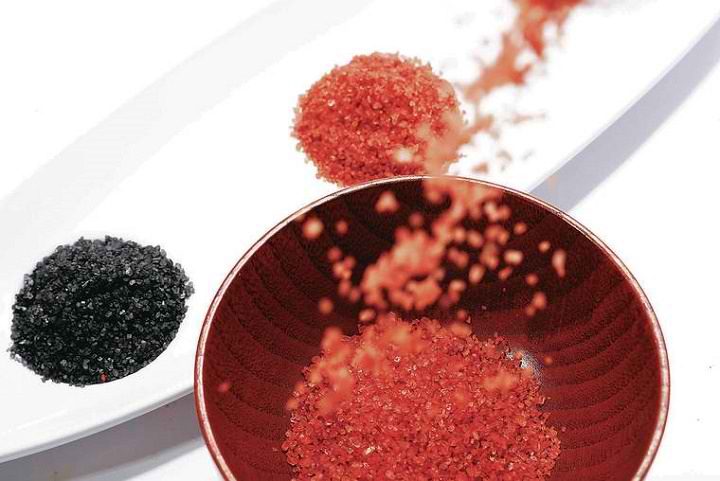
This salt is available in red and black colors; black Hawaiian or Black Lava Salt combines volcanic sea salt and activated charcoal. Red Hawaiian salt or Alaea salt is unrefined sea salt that is Red volcanic clay combined and rich in iron.
Black lava salt is harvested in Hawaii and Cyprus and then coated with activated charcoal, which gives it a unique dark color. Charcoal is an excellent body cleanser that is also good for digestion. This salt can be sprinkled on the food at the end and used to flavor and decorate the food.
Red salt contains more than 80 minerals and is rich in iron oxide. This salt has a mild saltiness and a delicate taste, which makes it an excellent choice for flavoring food and preserving meat and fish. This salt is great for adding color to food, mainly white food.
10. Celtic sea salt
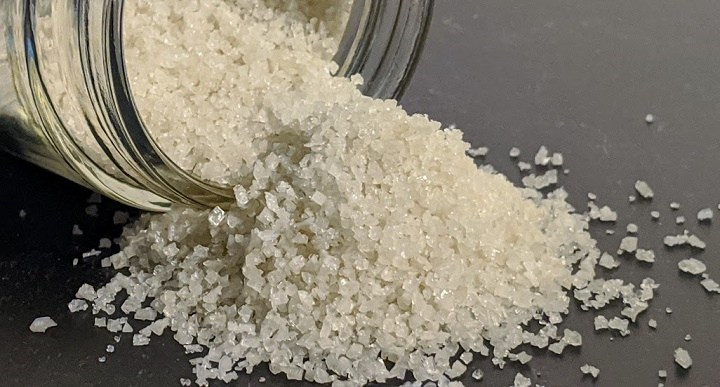
This salt, also called “Sal Grice” (gray salt), is a type of sea salt produced on the coast of France. Celtic gray salt is collected from the underwater seabed with a rake. Its crystals are large and usually moist and have a pleasant saltiness.
The minerals in this salt are balanced, and this property provides health benefits such as lowering blood pressure. This salt has an irregular, coarse texture, so it’s great for seasoning meat and pickling. It is better to use this salt after cooking and as a complementary salt, especially in highly spiced foods where you cannot feel its delicate and mild taste and texture.
11. Smoked salt
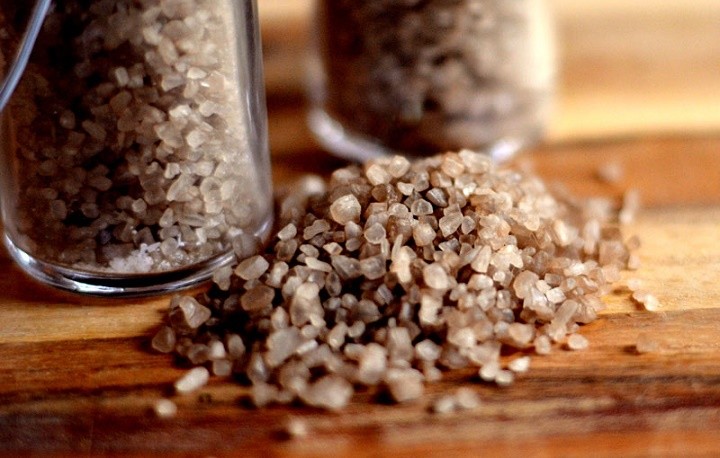
Smoked salt is salt that has been burning on wood for two weeks and has taken on the smell of smoke from burning wood.
12. Pickling salt
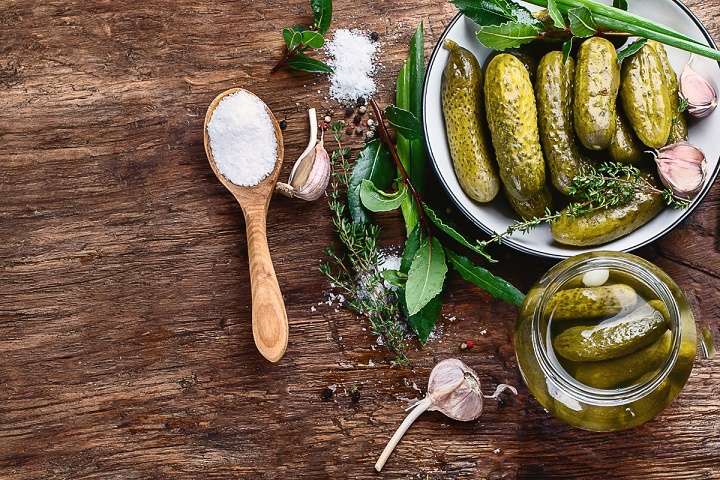
Pickling salt does not contain iodine, anti-caking agents, or minerals that may change the color of the pickle. With this salt, you can make flawless pickles and saltiness with a great taste.
13. Blue salt
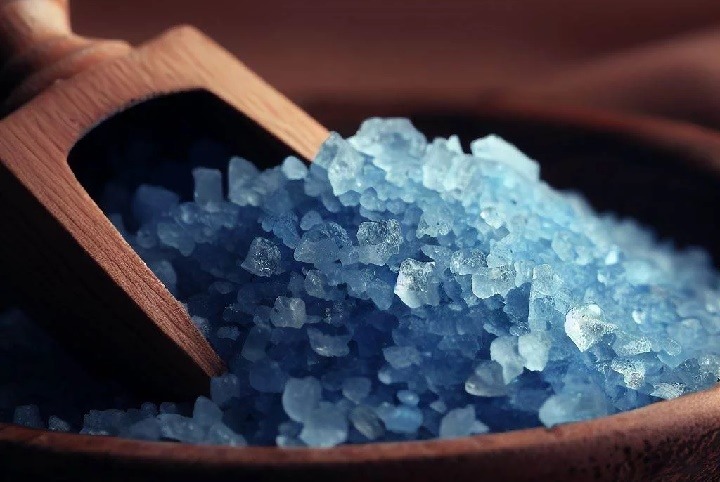
Blue salt is a rare and exceptional type of salt famous for its beautiful blue color and unique mineral composition. This salt is scarce and expensive because only a few tons of it are extracted yearly. Iranian blue salt, extracted from ancient salt ponds in Semnan province, is one of the rarest and oldest salts in the world. Today, these ponds have been formed for more than 100 million years and have all evaporated and turned into crystals and salt rocks!
The mineral sylvinite causes the blue color of this salt. Sylvinite is one of the potassium mineral compounds that exists only in crystalline salts or halite salts. This color is created during the formation of the salt crystal structure and due to the intense pressure exerted on the salt deposits.
Blue salt has a crunchy texture and an exceptional taste. Due to the versatility of blue salt, it can be used in many dishes, from sweet treats like caramel and chocolate desserts to dishes like seafood and grilled meats. It is better to use blue salt after cooking because the use of this salt during cooking causes the loss of its delicate taste and blue color. Pouring blue salt on sweet foods like caramel dessert gives them a beautiful and luxurious look.
Blue salt contains various essential minerals, including sodium, potassium, magnesium, calcium, and iron. These substances play a vital role in supporting body functions. They help maintain fluid balance, help nerves and muscles function better, and contribute to overall health.
Consuming too much salt causes health problems such as high blood pressure. Using blue salt instead of ordinary table salt can be beneficial, because blue salt contains minerals useful for the body. Of course, the amount of minerals in this salt is relatively small, and you must have a balanced diet to consume enough minerals.
14. Flavored salts
Flavored salts combine flaky salt and dried herbs or spices that enhance food flavor. These salts are perfect for when you want to add flavor to food. These salts can flavor meat, chicken, fish, and vegetables.
The best edible salt for cooking
Deciding on using table salt for cooking depends on what purpose we use the salt for. Finer salts dissolve faster and are best for cooking, flavoring, or preserving food. However, coarser salts give a unique texture to the food, and it is better to use them as supplementary salt. If you want to give your food a better taste, try different types of table salt.
Which salt do you think is better? Does knowing the types of salts affect the quality of cooking and food taste? Which of the types of salt introduced in this article have you tried?
Warning! This article is only for educational purposes; to use it, it is necessary to consult a doctor or specialist.
